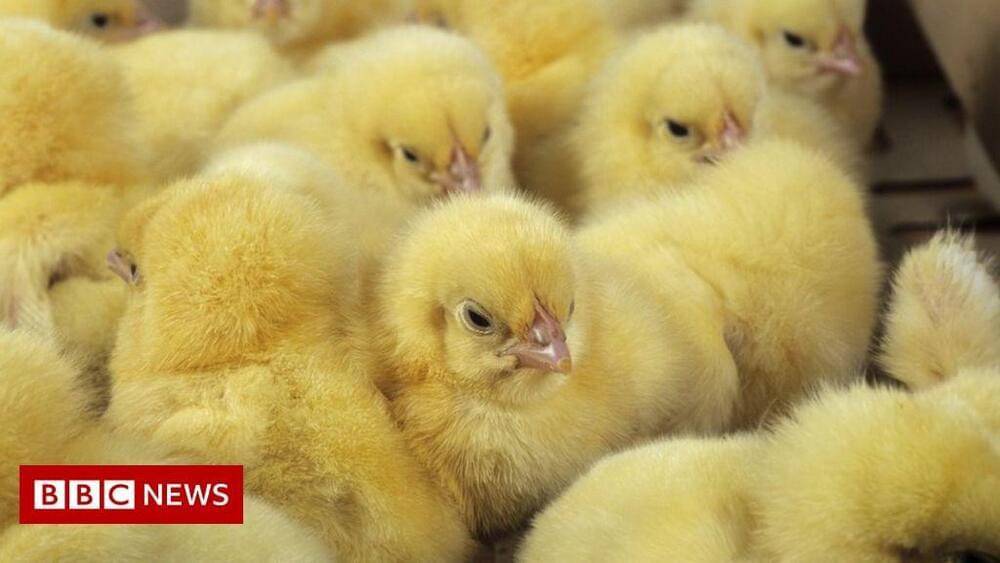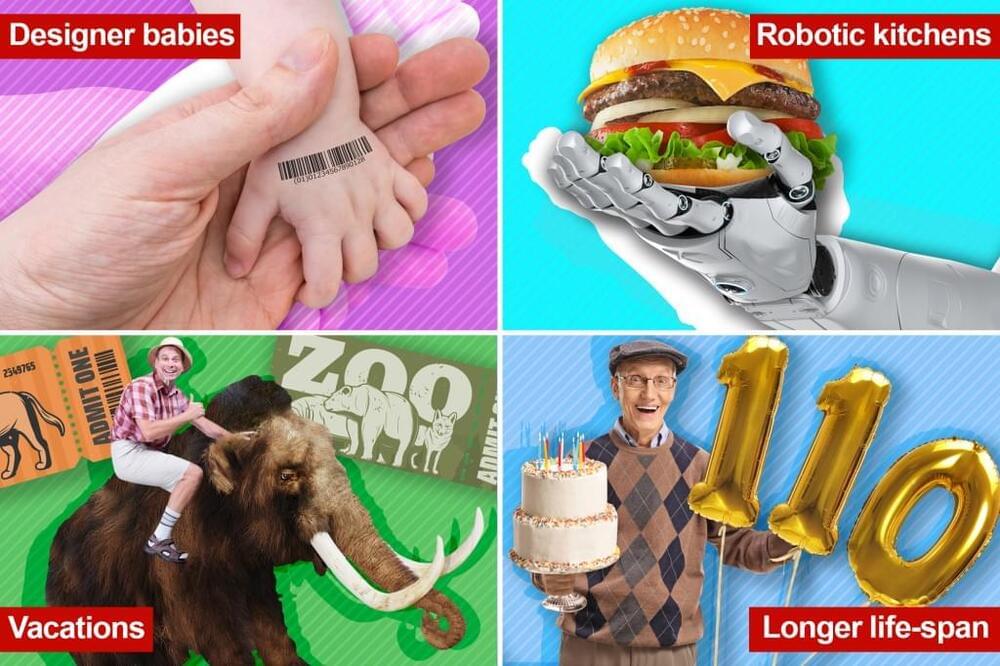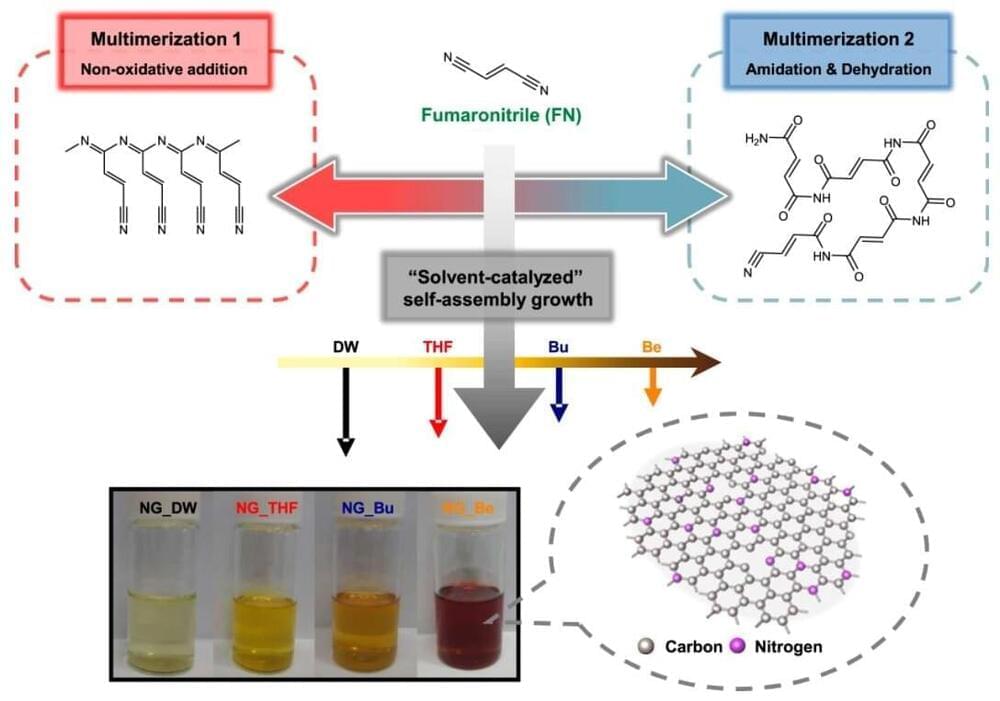Page 4693
Dec 5, 2021
Amazon brings automated secrets detection to CodeGuru
Posted by Shubham Ghosh Roy in categories: futurism, robotics/AI
Amazon has launched a new secrets detection feature that automatically finds private system credentials “hidden” in public source code.
Dec 5, 2021
Synthetic Organelles Let Researchers Control Cell Behavior
Posted by Shailesh Prasad in category: futurism
A technique that reversibly bundles tagged cargo into artificial membraneless compartments gives scientists the ability to switch cell processes on and off.
Dec 5, 2021
The Metaverse Is Coming, and the World Is Not Ready for It
Posted by Kelvin Dafiaghor in categories: economics, virtual reality
Virtual environments have also shown promise for activists resisting digital authoritarianism. On Minecraft, Reporters Without Borders has sponsored an Uncensored Library where users could see content by dissident writers that had been censored in countries like Saudi Arabia, Russia and Vietnam. It’s possible that the metaverse may bring new promise for freedom and transparency across borders.
But the metaverse’s consequences may be even more radical.
If it becomes as all-encompassing as some predict, the metaverse may foster virtual communities, networks and economies that transcend borders and national identities. Individuals might one day identify primarily with metaverse-based decentralized autonomous organizations with their own quasi-foreign policies. Such a transition could mandate the reconceptualization of geopolitical affairs from the ground up.
Dec 5, 2021
Gene edited sex selection may spare animal suffering
Posted by Kelvin Dafiaghor in categories: bioengineering, biotech/medical, sex
A gene editing technique may prevent the slaughter of animals not needed by the livestock industry.
Dec 4, 2021
Futurists predict how we’ll one day eat, vacation and work
Posted by Derick Lee in categories: cybercrime/malcode, mobile phones, privacy, robotics/AI
Forget about Mark Zuckerberg, Facebook and all the talk about a metaverse. The real future will be a world that is convenient and scary and fantastical — at least according to futurologists. As this year ends, here’s a glimpse at what life might be like … one day.
Facial recognition is already common for phones, but “In 30 years it’s quite possible that you will not use a key or even a credit card. You’ll use your face or iris to make purchases and open locks. Recognition will be that good,” said Martin Ford, author of “Rule of the Robots: How Artificial Intelligence will Transform Everything.”
“The scary thing, though, will be if someone hacks your biometric data. Right now you can call the bank to change your pin or cancel a credit card. But you can’t cancel your biometrics.”
Dec 4, 2021
AI Is Discovering Patterns in Pure Mathematics That Have Never Been Seen Before
Posted by Dan Kummer in categories: biological, mathematics, robotics/AI
We can add suggesting and proving mathematical theorems to the long list of what artificial intelligence is capable of: Mathematicians and AI experts have teamed up to demonstrate how machine learning can open up new avenues to explore in the field.
While mathematicians have been using computers to discover patterns for decades, the increasing power of machine learning means that these networks can work through huge swathes of data and identify patterns that haven’t been spotted before.
In a newly published study, a research team used artificial intelligence systems developed by DeepMind, the same company that has been deploying AI to solve tricky biology problems and improve the accuracy of weather forecasts, to unknot some long-standing math problems.
Dec 4, 2021
Ben Goertzel On The Crypto Singularity, UBI & Inflation
Posted by Kelvin Dafiaghor in category: singularity

Ben Goertzel, founder of SingularityNET, sits down with Cryptographic Asset founder Justin O’Connell to discuss the crypto singularity at CoinAgenda 2021 in Las Vegas, Nevada at The New York, New York Hotel & Casino.
CryptographicAsset:
Tweets by GldSlvBtc
Dec 4, 2021
Pythagoras’ Revenge: Humans Didn’t Invent Mathematics, It’s What the Physical World Is Made Of
Posted by Dan Breeden in categories: mathematics, particle physics, quantum physics, solar power, sustainability
Graphene consists of a planar structure, with carbon atoms connected in a hexagonal shape that resembles a beehive. When graphene is reduced to several nanometers (nm) in size, it becomes a graphene quantum dot that exhibits fluorescent and semiconductor properties. Graphene quantum dots can be used in various applications as a novel material, including display screens, solar cells, secondary batteries, bioimaging, lighting, photocatalysis, and sensors. Interest in graphene quantum dots is growing, because recent research has demonstrated that controlling the proportion of heteroatoms (such as nitrogen, sulfur, and phosphorous) within the carbon structures of certain materials enhances their optical, electrical, and catalytic properties.
Dec 4, 2021
Development of a single-process platform for the manufacture of graphene quantum dots
Posted by Dan Breeden in categories: chemistry, nanotechnology, particle physics, quantum physics, solar power, space, sustainability
Graphene consists of a planar structure, with carbon atoms connected in a hexagonal shape that resembles a beehive. When graphene is reduced to several nanometers (nm) in size, it becomes a graphene quantum dot that exhibits fluorescent and semiconductor properties. Graphene quantum dots can be used in various applications as a novel material, including display screens, solar cells, secondary batteries, bioimaging, lighting, photocatalysis, and sensors. Interest in graphene quantum dots is growing, because recent research has demonstrated that controlling the proportion of heteroatoms (such as nitrogen, sulfur, and phosphorous) within the carbon structures of certain materials enhances their optical, electrical, and catalytic properties.
The Korea Institute of Science and Technology (KIST, President Seok-Jin Yoon) reported that the research team led by Dr. Byung-Joon Moon and Dr. Sukang Bae of the Functional Composite Materials Research Center have developed a technique to precisely control the bonding structure of single heteroatoms in the graphene quantum dot, which is a zero-dimensional carbon nanomaterial, through simple chemical reaction control; and that they identified the relevant reaction mechanisms.
With the aim of controlling heteroatom incorporation within the graphene quantum dot, researchers have previously investigated using additives that introduce the heteroatom into the dot after the dot itself has already been synthesized. The dot then had to be purified further, so this method added several steps to the overall fabrication process. Another method that was studied involved the simultaneous use of multiple organic precursors (which are the main ingredients for dot synthesis), along with the additives that contain the heteroatom. However, these methods had significant disadvantages, including reduced crystallinity in the final product and lower overall reaction yield, since several additional purification steps had to be implemented. Furthermore, in order to obtain quantum dots with the chemical compositions desired by manufacturers, various reaction conditions, such as the proportion of additives, would have to be optimized.

















